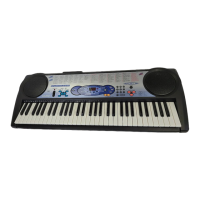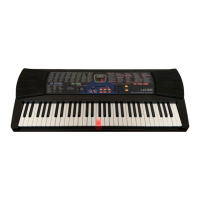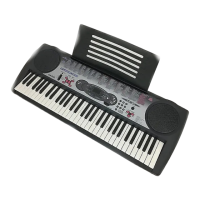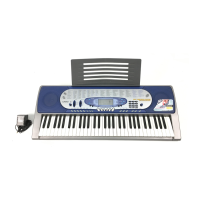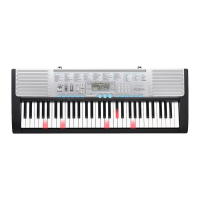Why is there no sound when I press the keys on my Casio LK-40 Electronic Keyboard?
- PpmackAug 15, 2025
There are several potential reasons for this issue: * **Power supply:** Ensure the AC adapter is correctly attached, the batteries are properly inserted with the correct polarity (+/–), and that the batteries are not depleted. * **Volume:** Check if the volume is set to 0. If so, press the VOLUME button. * **Headphones:** If headphones are plugged into the PHONES/OUTPUT jack, unplug them. * **Power/Mode Selector:** If the POWER/MODE selector is in the CASIO CHORD or FINGERED position, change it to NORMAL. * **Tone Selection:** If tone “99 PERCUSSION” is selected, only keys to the left of B?4 will produce sound. These keys are marked with percussion instrument illustrations.
